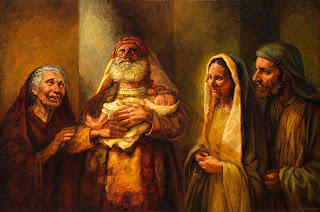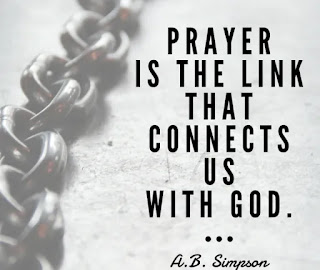Anna was an extraordinary person who demonstrated great faith and devotion. A prophetess who spent her days seeking God. After only several years of marriage, her husband dies, leaving Anna with no family to take care of her. As a widow, Anna was among the most vulnerable in society. She spent the rest of her life in the temple, praying and fasting. She worshiped day and night. She was one of the first to bear witness to Jesus, who she longed to see, as the coming Messiah. She is only mentioned in Luke 2:36-38.Two short verses detail a woman of devotion.
At 84 years old, Anna has spent her time at the temple in Jerusalem. She spends her days praying the words of the psalms. She was a woman with a great spiritual appetite, giving her life to God. One day begins like any other day for Anna. Until Old Simeon holds a baby to his chest and loudly proclaims, “Sovereign Lord, as you have promised…” (Luke 2:29-32). Anna gazes at the infant in his arms and her heart feels lighter, her hope unsinkable. Was it true? This infant was the coming Messiah? Her devotion was rewarded as she was present when Jesus was presented at the temple as dedicated by the Law. She marveled at this child. She sees God’s words being revealed before her eyes. Anna witnesses the beginning of the walls being torn down between God and the people. He was revealing himself to all who hungered to know him. When she saw the infant Jesus, she gave thanks to God and spoke about Jesus to all who were looking forward to the redemption of Jerusalem (Luke 2:38). The temple in which Anna worshiped was the second temple. It replaced Solomon’s temple which was destroyed after the Jews were taken into exile to Babylon. The second temple was begun by Zerubbabel when the Jews returned from Babylon and completed by Herod the Great (between c. 516 BCE and 70 CE). This temple had four courts, each more exclusive than the one before. First, the Court of Gentiles. This court is where non-Jews were allowed. It was also primarily a bazaar. Vendors sold souvenirs, sacrificial animals and food. Currencies were also exchanged. This is the court Jesus would clear (Matthew 21:12-17, Mark 11:15-19. Luke 19:45-48, and John 2:13-16). Second, the Women’s Court. This is the court in which Anna would have been allowed to worship and pray. Third, the Court of Israel. This court was exclusively for men only. Lastly, the Court of Priests. This court is where the priests would conduct their services and rituals. What can we learn from Anna? One thing sticks out in her story. Prayer. Anna was a prime example of praying without ceasing as Paul wrote in 1 Thessalonians 5:17. Luke 2:37 says she never left the temple, worshiped day and night, fasting and praying. There are many benefits to prayer. First, prayer helps us develop a relationship with God. Through prayer, we can learn about Him, His will for our lives and helps us become more like Jesus. Second, prayer provides answers and directions in our lives. We pray, he listens. God often answers in the firm of thoughts and dreams, through reading of Scripture and the words and actions of others. One of my favorite examples of God’s answers through prayers is when I was a new believer, I prayed one night without really knowing what to pray for. In church the next morning, the pastor was preaching on Romans 12:12. “Be joyful in hope, patient in affliction, faithful in prayer.” I was amazed that he answered that way. Not all my prayers have been answered like that but they can be! In conclusion, Anna was a woman of devotion and prayer. Her devotion was rewarded as she got to witness the coming Messiah in her lifetime. Prayer can often be the one aspect of a Christian’s life that is often forgotten or pushed away. However, prayer doesn’t have to be hours long or, in Anna’s story, all day. It can be simple prayer as you head to work, as you shower, cook a meal and even as you fall asleep at night. It is as simple as talking. God wants to hear from us. Be like Anna and talk to him.



GREAT POST
ReplyDelete